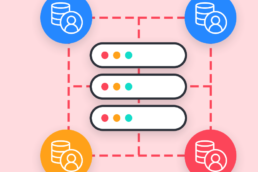On April 12th, the IAB Tech Lab announced the completion of the Open RTB 2.6 draft and reported that the new standard is ready for implementation.
This is really good news for all players in the industry because the current version of the OpenRTB protocol is completely deprecative, and reduces the effectiveness of programmatic trading.
With the new version available, both supply and demand get more flexibility, especially in the areas of CTV and Context.
Let’s take a look at the key areas of change and how AdTech will benefit players:
- New attributes and guides for buying and selling ad pods
- New objects to describe channel and content network
- User-agent object structured to support upcoming user-agent chain freeze
- Use AdCOM 1.0 lists for faster updates
CTV pod bids
Due to the nature of television content and commercial breaks, multiple ads serves within each commercial break. The podded request/response concept came into play a while ago. The ability to bid and fill each slot in a group, but not the entire time of the commercial break.
In addition, individual offers in a slot often led to recurring advertisements being shown during the commercial break and did not allow for a competitive separation of the brands. OpenRTB 2.6, Advertisers could get the full length of the commercial break and choose the best way to fill it with multiple promotional videos of different lengths.

This feature can significantly increase the performance of any ad group publisher. Another important parameter that appears in the new version of the standard is “mincpmpersec” – the minimum rate per second for video ads.
Since the duration of the videos is different, this parameter allows buyers to compare the offers of different ads and choose the most profitable. a series of videos in the ad unit.
More context for buyers
What does it take to find, inspire and retain top talent in a world where typical workplace dynamics prevail?
Buyers need to understand that the ad position in the application belongs to a network or television channel.
Before the release of the OpenRTB 2.6 standard, advertisers did not have such an opportunity. In the new version two new context objects “Network” and “Channel” has appeared. This change will greatly expand both content-specific targeting and brand safety options.
User-agent content structuring
Old approaches to using fingerprinting methods when working with user-agent information will be phased out of the game for the foreseeable future.
This may affect the proper delivery of ads to the user’s device. Therefore, the importance of such information remains strained. OpenRTB 2.6 provides an alternative method of delivering user agent content in the form of structured objects.
Parameters such as the user’s browser, device platform and model, and even architecture and bitness could be passed through the appropriate object attributes.
Structured user-agent information is provided when a client supports user-agent-client hints. The improvement will help ensure that the ads continue to display correctly.
ADCOM lists for flexibility
A lack of consistent standards for describing taxonomy, creative formats, locations, etc. has prompted industry players to develop their specific lists of these parameters. In the context of a single programmatic ecosystem, the difference in specifications leads to significant technical losses and opportunities for fraud and illegal activities.
It is very important to bring these different formats to a common denominator when it comes to developing Industry standards.
The AdCOM is the layered specification aimed at addressing these challenges and helping to standardize many options.
Because AdCOM is a living specification and is constantly updated. Using the lists of this specification in the OpenRTB 2.6 standard provides the necessary flexibility.
The rapid development of the programmatic environment requires rapid changes in standards. With the launch of AdCOM 1.0 Lists, we’re getting closer to where it needs to be Efficiency.
Admixed now supports OpenRTB 2
Admixed stays abreast of ongoing changes to the standards and actively participates in the development of new protocols within the Programmatic Supply Chain Working Group.

On the technical side, all the new OpenRTB 2.6 features are ready to be used in Admixer SSP. Both demand and supply partners can now benefit from the innovations.



